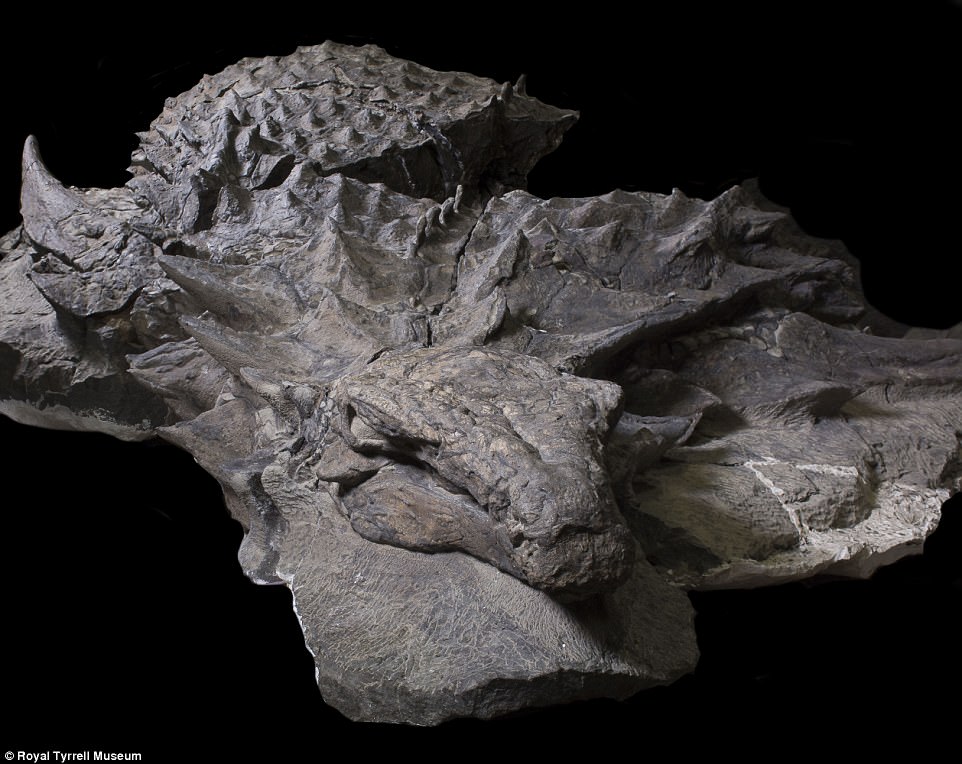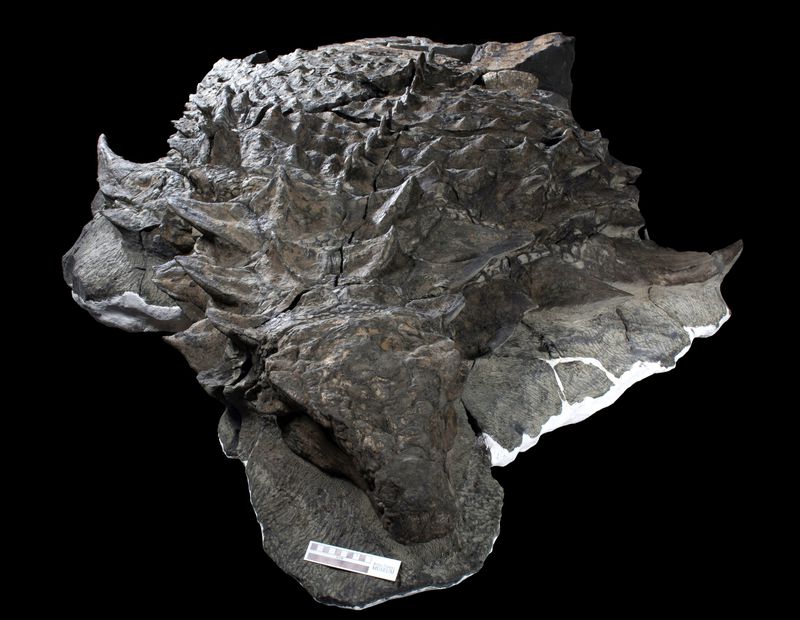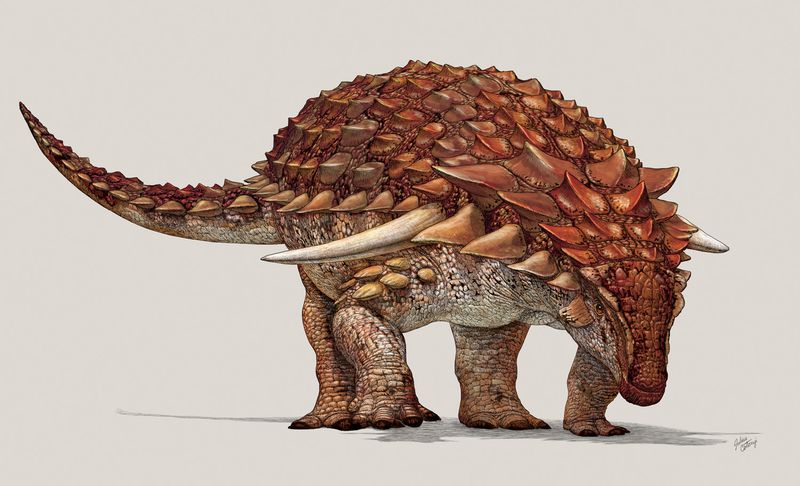
Over a 100 million years ago, an 18-foot (5.48 meter) long, 2,500-pound (1,133 kg) pineapple-shaped dinosaur met an untimely death when it was swept away by a river in what is now Alberta, Canada. Fortunately for us, its body ended up situated back-first on the muddy floor of an old seaway. This helped preserve the ancient behemoth’s front half in such extraordinary 3-D detail that the armored dinosaur almost looks alive.
The pristine fossil, identified as a new species and genus of the plant-eating armored nodosaur, was discovered by accident. In 2011, Shawn Funk, a heavy equipment operator, was drilling in an oil sands mine in northern Alberta when his machine hit something that was much harder than the surrounding rock. Upon investigating, he found multiple sandy brown disks that did not appear to be like anything he had encountered before.

Believing he may have stumbled upon something significant, Funk convinced his supervisor to send the artifacts to the Royal Tyrell Museum in Drumheller, Alberta. Then began the painstaking process of chipping away the wood that had kept the fossils safe for over a century. It took lab technician Mark Mitchell more than 7,000 hours over six years to unearth the fossil. But it was well-worth the effort. Unlike other dinosaur remains that comprise just bones, this ancient creature still had its skin and scales or, as the museum described it, “(was) encased in intact body armor.”
The dinosaur, which is now part of the museum’s new exhibit, Grounds for Discovery, is the first member of the genus Borealopelta (Northern Shield). It has been named markmitchelli in honor of Mitchell, whose hard work helped uncover its full glory. In addition to providing researchers new insights into the structure and life of armored dinosaurs, Caleb Brown, the museum’s dinosaur expert, and his team have uncovered another interesting fact.

They believe the dinosaur comprised two colors – it was a dark reddish-brown on the back and lighter on its underbelly. While some animals feature two-tone colors to help them regulate body temperature, the scientists who published their findings in Current Biology on August 21, assert that these dinosaurs used it for camouflage. This has led them to conclude that the ancient creatures had some ferocious predators. Paleobiologist Jakob Vitner, an expert on animal coloration from the U.K.’s University of Bristol, who co-wrote the study, says, “the short story is, the Cretaceous is bloody scary. We have evidence for the fact that these theropods were eating Borealopelta [and other] large, heavily armored herbivores, taking them down and gulping them up.”
However, not all experts agree with this theory. They believe that Vitner’s conclusion, based on evidence of chemicals traces left behind by color pigmentation found on the scaly creature, is flawed. Alison Moyer, a postdoctoral researcher at Drexel University, thinks that the study has not taken into account how the fossil’s chemistry evolved over time, or whether its darker exterior is skin or remains of a bacterial film developed over the 110 million years. Additionally, since the skin does not extend to markmitchelli’s underbelly, it is hard to determine if the area lacked pigmentation. Though Moyer may dispute some of the study’s conclusions, the expert does agree the specimen is “an absolutely awesome paleontological discovery.”

Nodosaurs were herbivores that lived in what is now North America, Europe, Asia, and Antarctica between 110 and 112 million years ago. The giants were reputed to be reclusive animals who kept predators at bay with a unique weapon – 20-inch shoulder spikes, similar to bull horns, that jutted out from each side of their body. Like their counterparts, they disappeared at the end of the Cretaceous Period, about 65 million years ago. Fortunately, thanks to Borealopelta Markmitchelli, we at least know how this armoured dinosaur species looked.
Resources: Atlantic.com. National Geographic.com, theverge.com, daiilymail.co.uk